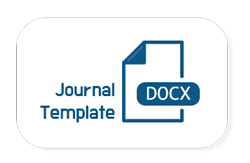Integration of Geographic Information Systems in Water Quality Mapping to Support Community Sanitation Programs
DOI:
https://doi.org/10.63296/jgh.v4i1.56Keywords:
Water quality, GIS, STORET, EPT, Community sanitation, Spatial interpolationAbstract
The decline in river water quality due to domestic and industrial pollution presents a major challenge in urban environmental management. This study aims to map the spatial distribution of water quality in the Upper Metro Sub-watershed using a Geographic Information System (GIS) approach to support community-based sanitation planning. The methodology involved the measurement of physical, chemical, and biological parameters at five monitoring stations. Water quality was evaluated using the STORET method and EPT Index (Ephemeroptera, Plecoptera, Trichoptera), while spatial data were analyzed using IDW interpolation to generate pollution distribution maps. The results revealed a downstream degradation in water quality, indicated by increasing levels of BOD, COD, TSS, and phosphate, and decreasing DO. According to STORET classification, the upstream area was categorized as unpolluted, whereas the downstream stations were moderately polluted. The EPT index decreased from 12 taxa upstream to none downstream, reinforcing the chemical analysis. Spatial maps highlighted pollution hotspots in densely populated residential and small industrial zones. GIS integration proved effective in visualizing pollution zones and supporting decision-making in the Total Sanitation Program (STBM). This study offers technical and spatial recommendations to improve data-driven water quality management.
Downloads
Published
How to Cite
Issue
Section
License
Copyright (c) 2025 Poegoeh et al.

This work is licensed under a Creative Commons Attribution 4.0 International License.












